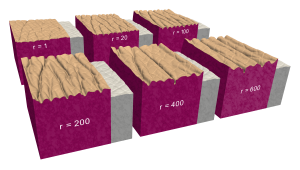This seminar took place on 19 Jan 2022, 1pm.
Georges Limbert’s research concerns the numerical modelling of soft tissue, in particular of skin. He is developing mechanistic models to understand the interplay between material and structural properties of the skin, how these change with the external conditions and with age, and how these models can be exploited for clinical and industrial applications.
In the seminar, Georges first reviewed the background of the skin structure and its functionalities. Skin is a hugely complex system and its mechanical properties are far from well understood. Yet, such understanding is key, for example, to minimise mechanical stresses in open wounds to support their healing or for the development of razors that minimise irritation and damage of the skin.
Georges then focused on several areas of his research: skin friction, skin ageing, and skin wrinkles. He defined the research questions based on current clinical and industrial applications and demonstrated how numerical modelling can help. As an example, he uses a finite element model to simulate how wrinkles are formed under compression (see figure). Depending on humidity, the mechanical properties of skin (its Young’s modulus) can change by orders of magnitude, and thus also its response to external forces hugely varies depending on conditions.
Overall, the seminar gave a fascinating insight into the complexity of skin properties and how modelling its mechanical properties can help with the development of cosmetics, consumer and medical devices, surgical procedures and in many other areas.

Figure 1. Structural deformations of an anatomically-based bi-layer finite element model of the skin upon application of a 25% in-plane compression as a function of the ratio of the ground state Young’s modulus between the 20 um thick stratum corneum (light brown colour) and that of the underlying substrate representing the living epidermis and dermis (pink colour). Adapted from G. Limbert et al., Biotribology 17, 75 (2019).
Dr Georges Limbert is Associate Professor at the national Centre for Advanced Tribology at the University of Southampton and Honorary Associate Professor at the University of Cape Town, South Africa.

Written by Peter Horak
